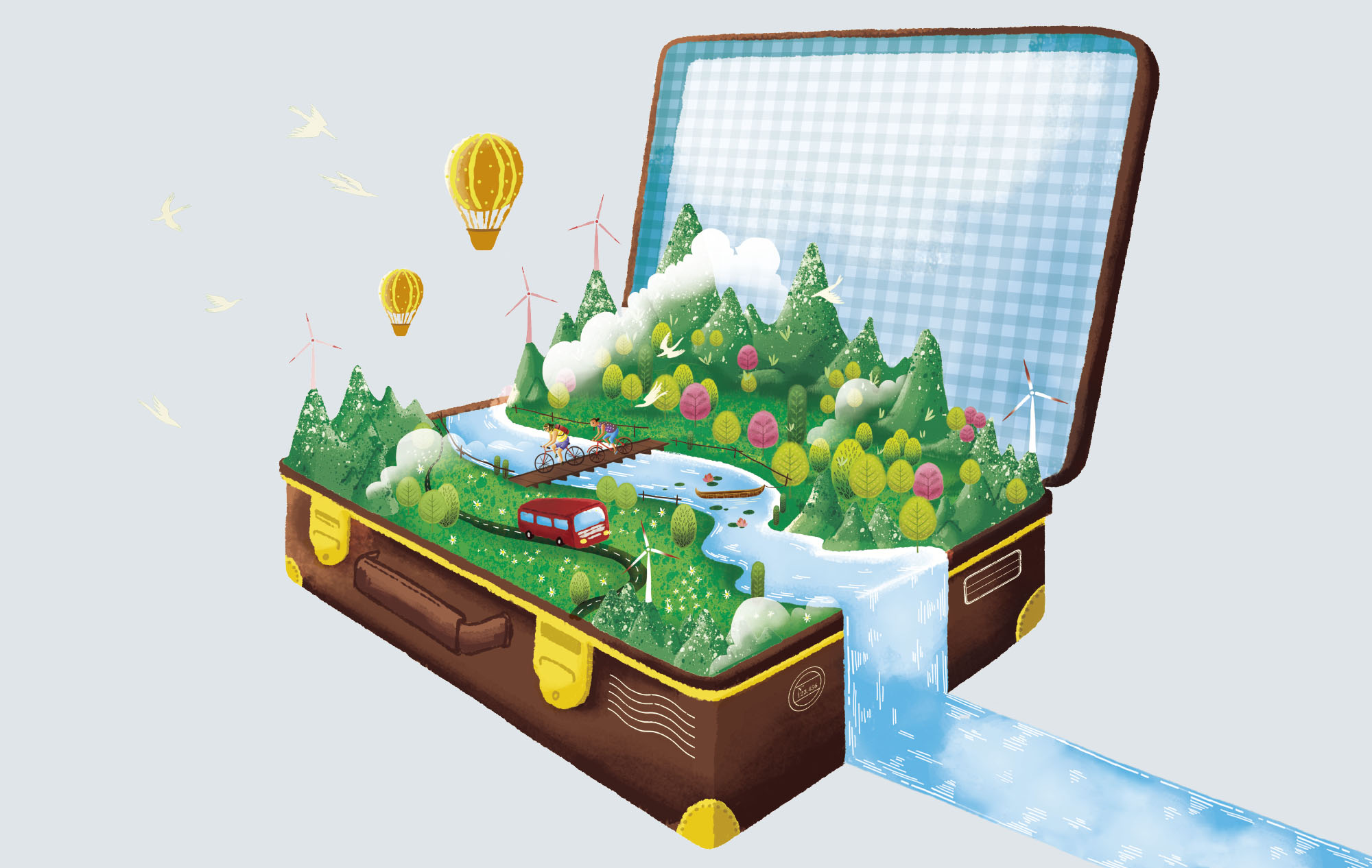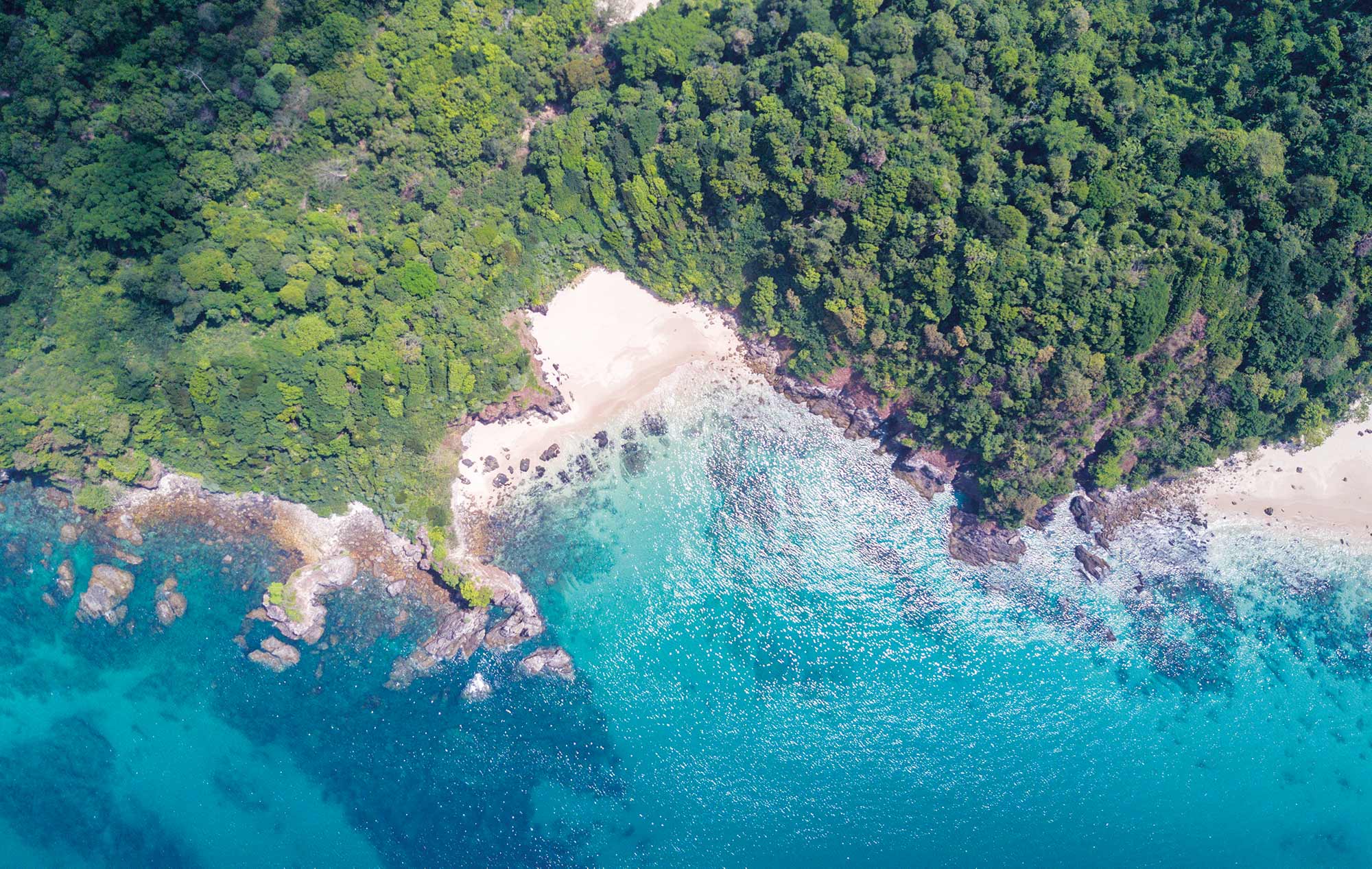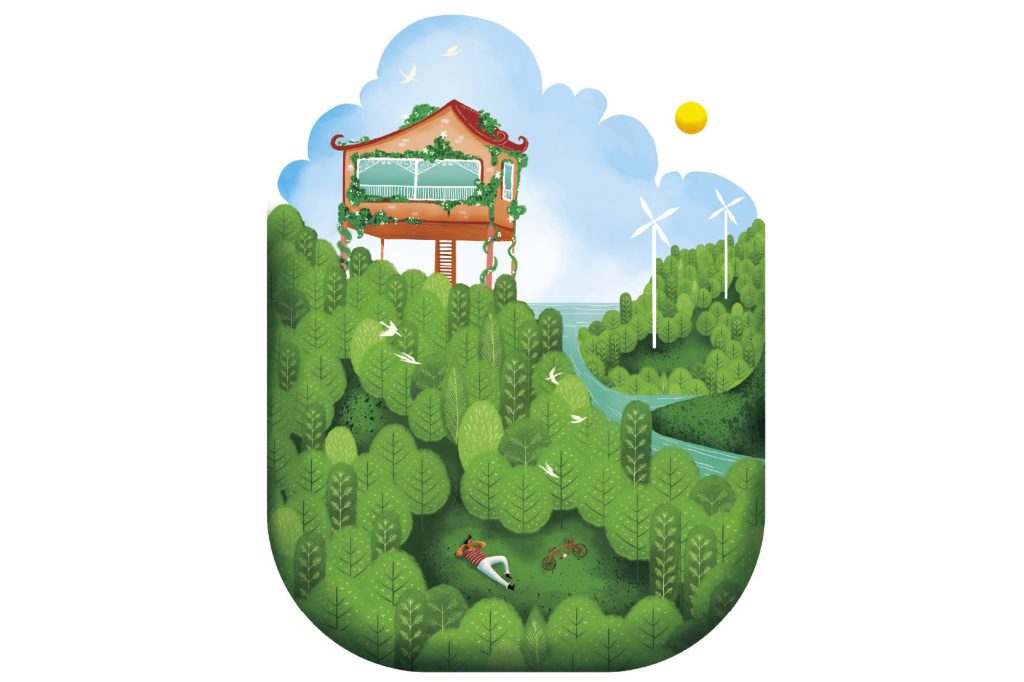
1. Choose a green destination
You can opt for a place like Costa Rica or the Greek island of Tilos, which are renowned for having transformed themselves into eco-friendly travel destinations, with renewable energy and strong measures to protect local biodiversity. But you don’t need to travel beyond Asia to find eco-friendly travel spots: Bhutan limits the number of tourists that can visit the country every year, reducing their ecological impact, while Taiwan’s Nanliao Village has encouraged organic agriculture, low-carbon accommodation and businesses that allow traditional ways of life to thrive.
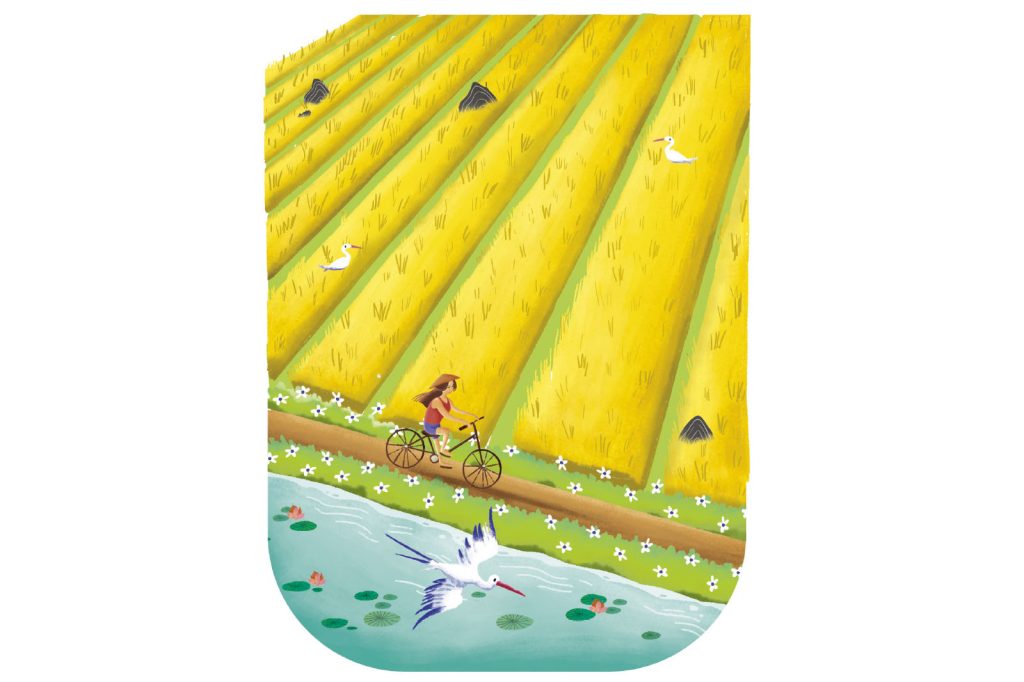
2. Get around by bike
There’s a reason cycling has seen a resurgence in cities around the world: it’s a fantastic way to travel. Riding a bike offers all the pleasure and possibilities of a leisurely saunter – if you see something interesting, you can stop and check it out – with the advantage of being quick, healthy and eco-friendly. Inexpensive, tourist-friendly bike share schemes began in Europe, but in recent years it’s Asia that has taken the lead with dockless systems that allow you to grab a bike and drop it off anywhere. Cities throughout the Chinese mainland are now filled with these bikes from companies such as Mobike and Ofo. They’ve also made an appearance in Singapore and Hong Kong, while Taipei and Seoul both have traditional bike share systems and a growing network of cycle tracks and bike lanes.

3. Buy carbon offsets
Today’s aircraft are twice as fuel efficient as they were 50 years ago but, sadly, they still release a lot of carbon dioxide into the atmosphere. Luckily, Cathay Pacific’s FLY greener programme allows you to offset your carbon emissions with cash or Asia Miles. That money then goes to independently reviewed and accredited projects that reduce carbon emissions, including a project in Vietnam of converting animal waste into clean energy via biogas digesters, as well as an initiative of providing modern cooking stoves to villagers in India to reduce the toxic fumes that come from the area’s traditional cooking apparatus. Carbon offsets can be surprisingly affordable. Flying one-way in economy class from Hong Kong to Tokyo? You’re producing 0.27 tonnes of carbon dioxide – and it costs just HK$6 to offset it. Visit cathaypacific.com/flygreener to offset your carbon footprint.
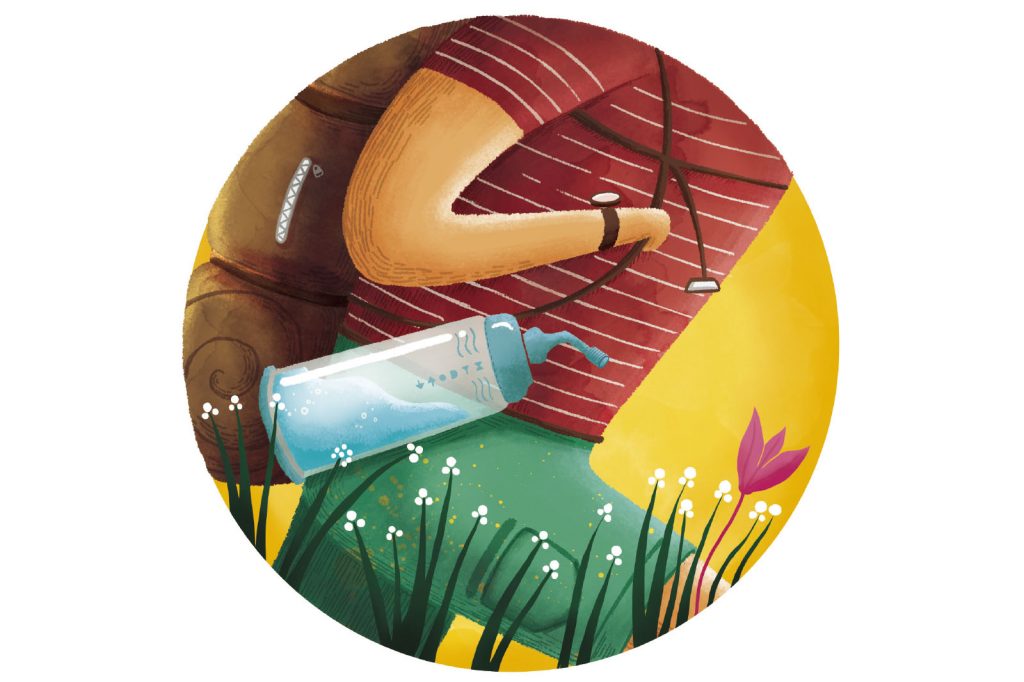
4. Bring your own containers
The world’s oceans are drowning in plastic – and the situation is only getting worse. Since 1950, 8.3 billion tonnes of plastic have been produced and just 21 percent has been recycled or incinerated. The rest has ended up in landfills and the ocean, wreaking havoc on the ecosystem. Bringing your own reusable containers is an easy and surprisingly stylish way to avoid contributing to the mess. Brands like Klean Kanteen, S’well and Hydro Flask have turned insulated, reusable water bottles into fashion objects, and you can also buy stainless-steel straws so you can avoid disposable plastic straws. If you’re travelling somewhere without reliably clean drinking water, bring along a ClearlyFiltered bottle, which removes 99 percent of bacteria, metals, contaminants, viruses and parasites. Brita Bottle, DrinkSafe Travel Tap and The Grayl are other travel-friendly options.
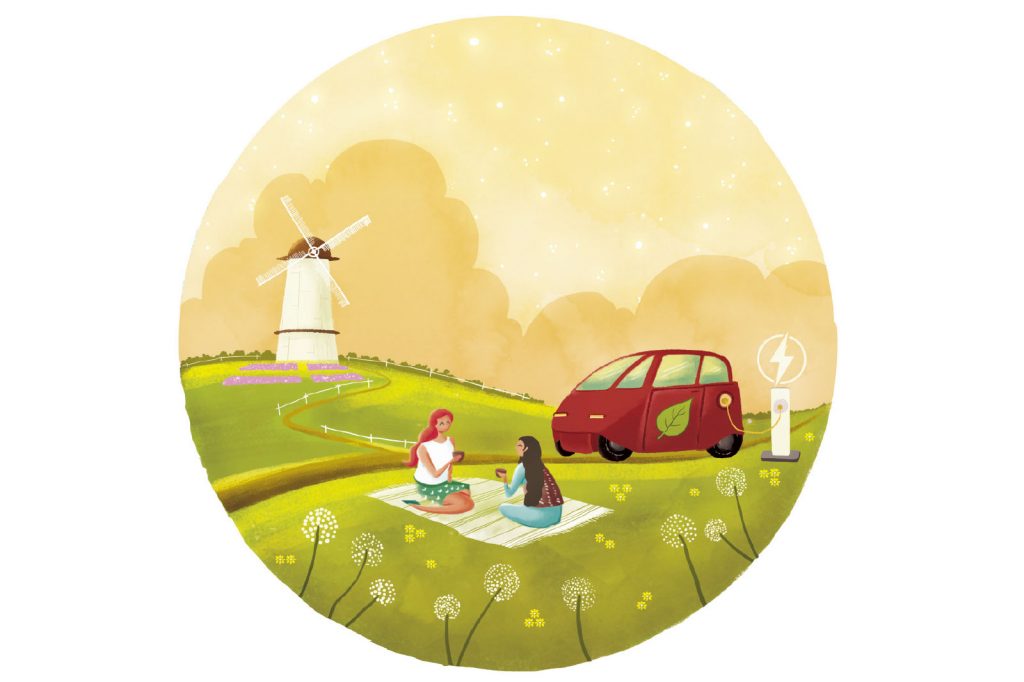
5. Rent an electric car
It’s hard to deny the romance of a road trip. ‘There was nowhere to go but everywhere,’ wrote Jack Kerouac in On the Road. And now that electric cars are common and affordable, it’s easier than ever to hit the highway without polluting the air. Many of Japan’s largest car hire agencies offer entry-level electric cars like the Nissan Leaf, which has a range of 172 kilometres per charge, making it a good choice for a leisurely country drive. If you run out of juice, don’t worry: Japan now has more electric car charge points than petrol stations. Farther afield, luxury electric cars from BMW and Tesla are popular in Europe and North America, which have growing networks of charging stations.
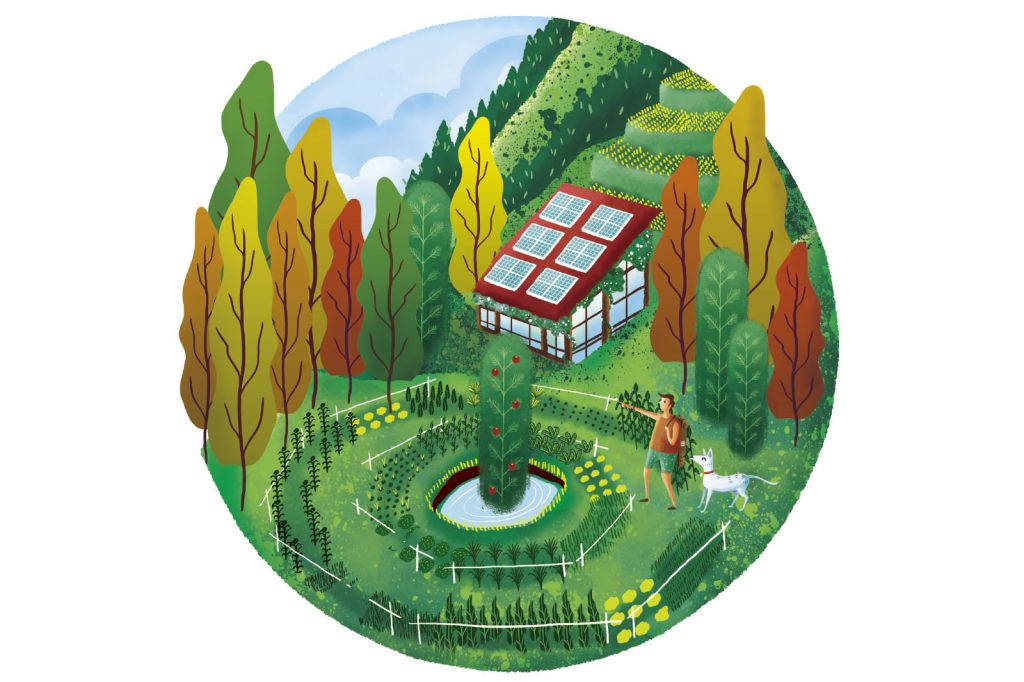
6. Have a sustainable farm stay
Just a short train ride outside Tokyo, Brown’s Field Chiba offers its guests a chance to decompress amid the tranquillity of an organic farm. They enjoy macrobiotic meals that are mostly vegan, except for local fish and cheese. Ducks live happily in the farm’s rice paddies, eating weeds and fertilising the rice seedlings with their droppings. Other environmentally friendly touches include composting toilets and rainwater sinks. A stay here is by no means rustic: a six-room guesthouse offers a luxurious ryokan (traditional Japanese lodging) experience, with organic tatami and hand-carved decorative screens.
There are plenty of other farm stay options around Asia. The online booking platform I Like Local offers a stay on a family-run organic farm on the Philippine island of Mindanao, where you can hike in the mountains and enjoy farm-to-table meals. Another option is a stay in a luxurious century-old farmhouse in Sri Lanka, where you can learn about organic farming from Ranjan and Maduka, two former city-dwellers who wanted to live closer to nature.

7. Eat local
Locally grown produce is fresher, tastier and a lot more environmentally friendly than food imported from overseas. And you can find it in the most unexpected places, like hyper-urban Hong Kong, where restaurants such as Locofama and Grassroots Pantry specialise in locally sourced ingredients. There’s even a farmhouse kitchen, O Veg Farm, located in the lush Kam Tin valley. To cook your own sustainable meals, check out the weekly Tong Chong Street Market and Tai Po Farmers’ Market, which focus on locally grown organic fruits and vegetables.

8. Choose an eco-friendly cruise
Cruising is popular but problematic. Although it’s a relaxing way to see many destinations in a relatively short period of time, cruise ships generate an enormous amount of pollution and waste, and destinations can be overwhelmed by thousands of visitors arriving at once. Every year, international green group Friends of the Earth ranks major cruise lines based on their sustainability. Disney consistently tops the list, thanks to its investments in water filtration and sewage treatment, although the most sustainable individual cruise ships belong to Holland America and Princess Cruises. For an even more eco-conscious option, the Lindblad Expeditions takes 148 passengers to remote places like the Galapagos Islands and Antarctica, with a focus on sustainable seafood, locally sourced meals and carbon offsets.

9. Stay in a green hotel
Singapore’s Parkroyal on Pickering hotel is a 16-storey tower – yet it contains as many square metres of greenery as the park across the street. Architects WOHA designed the hotel as a vertical garden infused with lush tropical vegetation. It’s an eye-catching approach to design, but the benefits are not just aesthetic. Thanks to its greenery, the hotel reduces its solar heat gain by 20 percent, cutting the amount of air-conditioning needed to cool guest rooms. Other green features include solar panels, rainwater recycling and the use of lightweight Cobiax slabs instead of energy-intensive concrete.
Since Parkroyal on Pickering opened in 2013, it has been joined by a host of eco-friendly accommodations across Asia. Chengdu’s Six Senses Qing Cheng Mountain resort uses low-impact construction materials, reusable glass bottles and electric Tesla Model S cars for airport transfers. There’s even an organic garden on-site that supplies the resort’s restaurant. In Hong Kong, Hotel ICON recycles its waste, donates excess food and uses a water-based cooling system that is 28 percent more efficient than traditional air-conditioning.
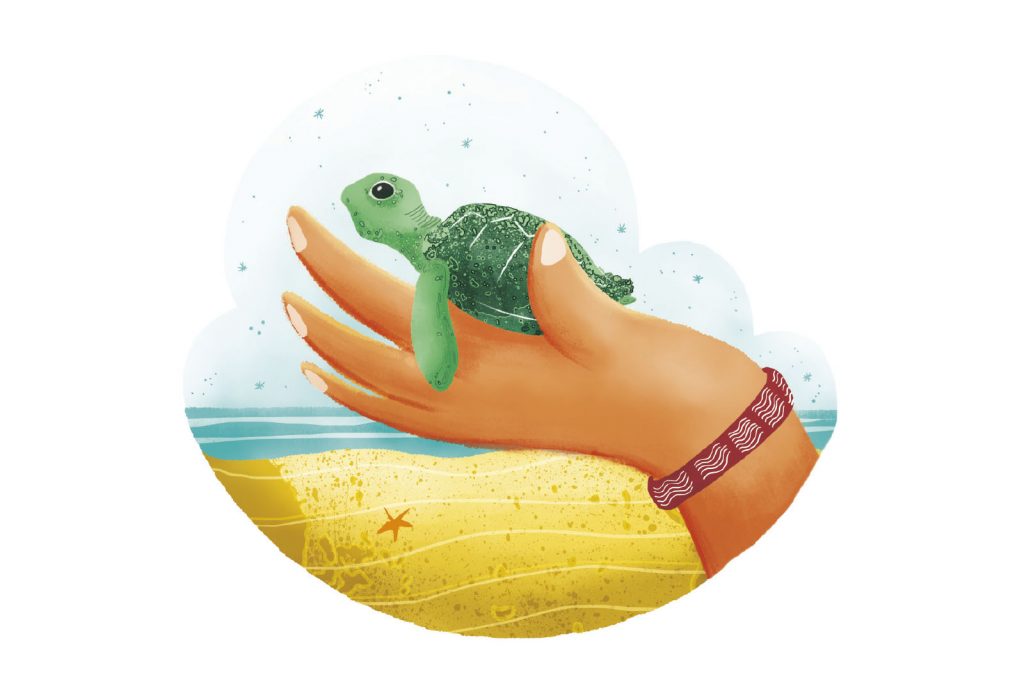
10. Volunteer – but do it right
Volunteer tourism is a way to use your free time to give back to less fortunate parts of the world. But it also presents a risk for well-meaning tourists who fall victim to scams like fake orphanages that worsen the suffering of children in countries like Cambodia. People & Places is a British-based platform that connects travellers with sustainable and reputable projects, while Volunteer Abroad evaluates volunteer programmes around the world.



